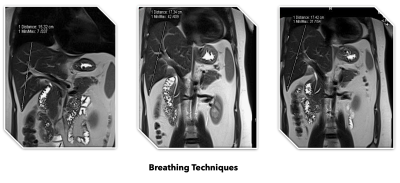Forum 8: Body
ISMRT Education Session
ORGANIZERS: Petronella
Samuels
Sunday, 11 May 2025
323AB
10:50 - 11:50
Moderators: Sonja
Boiteaux & Haidee Paterson
Session Number: ISMRT-08
CE Credit
Session Number:
ISMRT-08
Overview
MRCP protocols vary depending on the case, but key factors ensure a
high-quality examination. These include proper patient preparation,
optimal positioning, and selecting appropriate sequences and parameters.
Establishing robust, standardized protocols enhances consistency,
efficiency, and ease of execution among colleagues while minimizing
technician errors. Additionally, advancements in deep learning, now
available from most MRI vendors, contribute to faster and sharper
imaging. Implementing these best practices ensures reliable and
high-quality MRCP examinations.
This presentation will highlight key factors for a successful MRCP
examination, focusing on standardized protocols to improve consistency,
efficiency, and reduce technician errors.
Additionally, the role of deep learning in enhancing image quality will
be explored.
Chronic liver disease, a leading global cause of mortality, is projected
to rise significantly in the coming decades. Its heterogeneous course
and poorly understood progression triggers complications in risk
stratification and management, traditionally reliant on invasive
biopsies. Non-invasive imaging is vital for diagnosis and monitoring.
This presentation reviews recent advances in Magnetic Resonance
Elastography (MRE) and relaxometry for assessing progressive liver
disease. MRE liver stiffness and T1, T2* relaxation times will be
discussed in the context of fibrosis and inflammation. These techniques
improve patient-specific monitoring and support research into disease
mechanisms, addressing the urgent need for better outcomes.
Target Audience
MRI radiographers and technologists.
Educational Objectives
As a result of attending this course, participants should be able to:
• Understand the clinical utility of MRCP sequences;
• Learn how to ensure a successful examination by selecting and applying
the most appropriate MRCP sequences, including optimal parameter
settings and patient positioning;
• Understand the general hallmarks of chronic liver disease;
• Learn American Association for the Study of Liver Diseases (AASLD)
guidelines for NAFLD assessment and management with a focus on
non-invasive imaging;
• Understand the basics of MRE for liver stiffness measurement including
advanced 3D MRE techniques; and
• Learn about MR relaxometry (T1, T2*, and cT1) and its role in liver
assessment.
|
10:50 |
 |
Mastering MRCP: Tips, Tricks & Deep Learning Insights
Bac Nguyen
Impact: The presentation will highlight key factors for
a successful MRCP examination. Focus will be on standardized
protocols to improve consistency, efficiency, and reduce
technician errors. Additionally, the role of deep learning
in enhancing image quality will be explored.
|
|
11:20 |
|
MR Elastography & MR Relaxometry for the Assessment of Liver
Disease
Christoph Rettenmeier
Impact: Noninvasive imaging is increasingly important
for diagnosing and monitoring advanced liver disease. This
presentation reviews recent advances in MRE and MR
Relaxometry, focusing on their role in assessing fibrosis
and inflammation in progressive liver disease.
|

